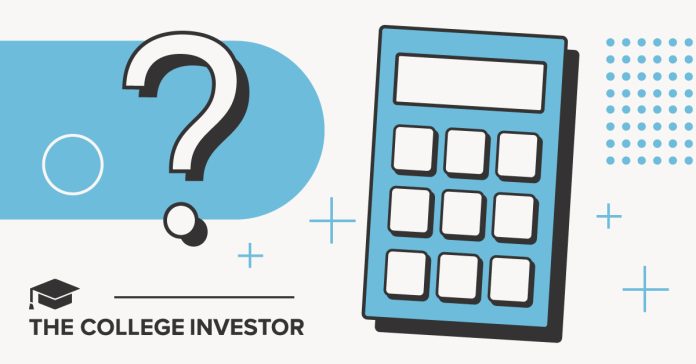- The Repayment Assistance Plan (RAP) is proposed to replace current income-driven repayment options for federal student loans.
- Monthly payments under RAP scale with income, ranging from $10 minimum up to 10% of adjusted gross income, with reductions for dependent children.
- The plan caps loan forgiveness at 30 years and avoids negative amortization through monthly interest subsidies and principal support.
Check out our new student loan calculator that helps borrowers estimate monthly payments under a proposed Repayment Assistance Plan (RAP), a key provision of the House GOP-backed bill set to reshape student loan repayment.
The proposed plan replaces existing income-driven plans like IBR, PAYE, and ICR for future borrowers and introduces a standardized approach that ties payments directly to adjusted gross income (AGI).
The new RAP formula departs from the current method of calculating discretionary income, replacing it with an income-tiered structure. Borrowers pay a set percentage of their AGI, with payments capped at 10% for those earning above $100,000 annually. Unlike earlier plans, RAP introduces a flat $10 monthly payment for borrowers earning $10,000 or less.
To make these changes easier to understand, our new calculator allows borrowers to see their estimated monthly payments under RAP. See our other student loan calculator here.
Repayment Assistance Plan (RAP) Calculator
Here is the RAP calculator:
How The RAP Formula Works
RAP payments are based on annual income brackets (based on adjusted gross income or AGI):
- AGI ≤ $10,000: Flat payment of $120/year ($10/month)
- $10,001–$20,000: 1%
- $20,001–$30,000: 2%
- $30,001–$40,000: 3%
- $40,001–$50,000: 4%
- $50,001–$60,000: 5%
- $60,001–$70,000: 6%
- $70,001–$80,000: 7%
- $80,001–$90,000: 8%
- $90,001–$100,000: 9%
- AGI > $100,000: 10% of AGI
To determine a borrower’s monthly payment, the base payment is divided by 12 and adjusted by subtracting $50 for each child under 17 who lives with the borrower.
If the calculation ends up less than $10 per month, the borrower would pay a minimum of $10/month.
Examples:
- A borrower with an AGI of $25,000 and two children would pay $10/month.
- A borrower with an AGI of $60,000 and no dependents would pay $250/month.
- A borrower with an AGI of $120,000 and one child one pay $950/month.
Comparing RAP To Current IDR Plans
Unlike RAP, existing income-driven repayment (IDR) plans such as IBR, PAYE, and ICR rely on a borrower’s discretionary income, which is calculated using federal poverty guidelines. For example, PAYE requires 10% of discretionary income over 150% of the poverty level. This method can produce lower monthly payments for low-income borrowers, but the calculations can be confusing.
RAP simplifies this process with income tiers and automatic interest forgiveness for some borrowers. While it imposes a longer maximum repayment term (30 years), it eliminates the risk of negative amortization by canceling unpaid interest each month.
IBR and PAYE offer forgiveness after 20 or 25 years, depending on the borrower’s loan type and when they entered repayment. RAP standardizes forgiveness at 360 monthly payments, or 30 years, but offers a consistent structure across income levels.
From a monthly payment perspective, using the above examples, a borrower on IBR today would pay (new IBR):
- A borrower with an AGI of $25,000 and two children would pay $0/month on IBR.
- A borrower with an AGI of $60,000 and no dependents would pay $312/month on IBR.
- A borrower with an AGI of $120,00 with one child would pay $745/month on IBR.
As you can see, RAP would benefit the lower income borrowers, but would be more costly for the higher income borrower. That’s why there are winners and losers in this proposal.
What Borrowers Need To Know
Our RAP calculator is designed to help borrowers anticipate their payments under the new structure, if it passes the Senate and is signed into law. Those earning less than $30,000 may see minimal changes, while middle and high income borrowers could see larger monthly payments.
Borrowers who begin repayment before July 1, 2026, can still access the existing old IBR plan, and the amended version removes the financial hardship test. Those in the SAVE forbearance will be transitioned into the amended IBR plan within six months of the new law’s enactment.
Although the RAP proposal offers consistency, it may not provide the lowest possible payment for every borrower. The loss of other IDR options narrows flexibility.
Hopefully, the calculator helps borrowers understand these trade-offs and make comparisons based on their specific income and family circumstances.
Don’t Miss These Other Stories:
GOP Budget Plan Cuts Pell Grants And 30-Year Student Loans
SAVE Student Loan Plan Timeline Estimates: What To Expect
How To Legally Reduce Your IDR Payment (And Avoid Fraud)
Create your very own Auto Publish News/Blog Site and Earn Passive Income in Just 4 Easy Steps






